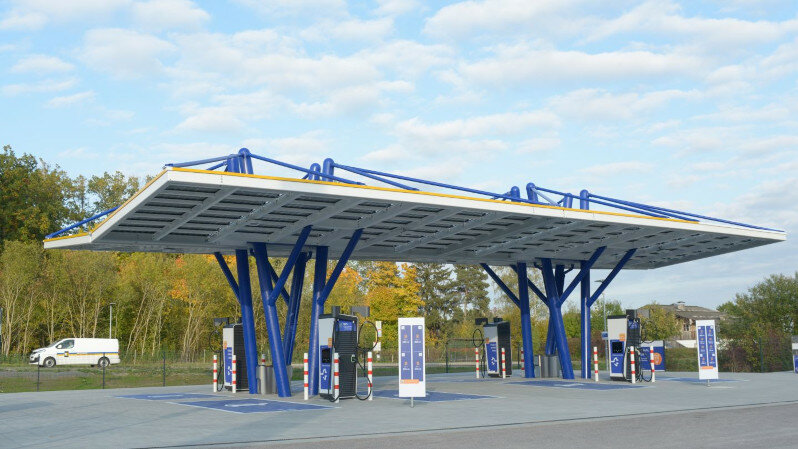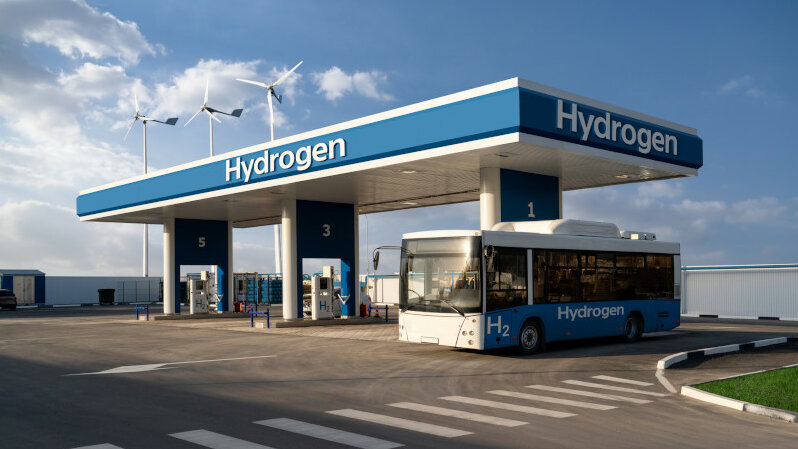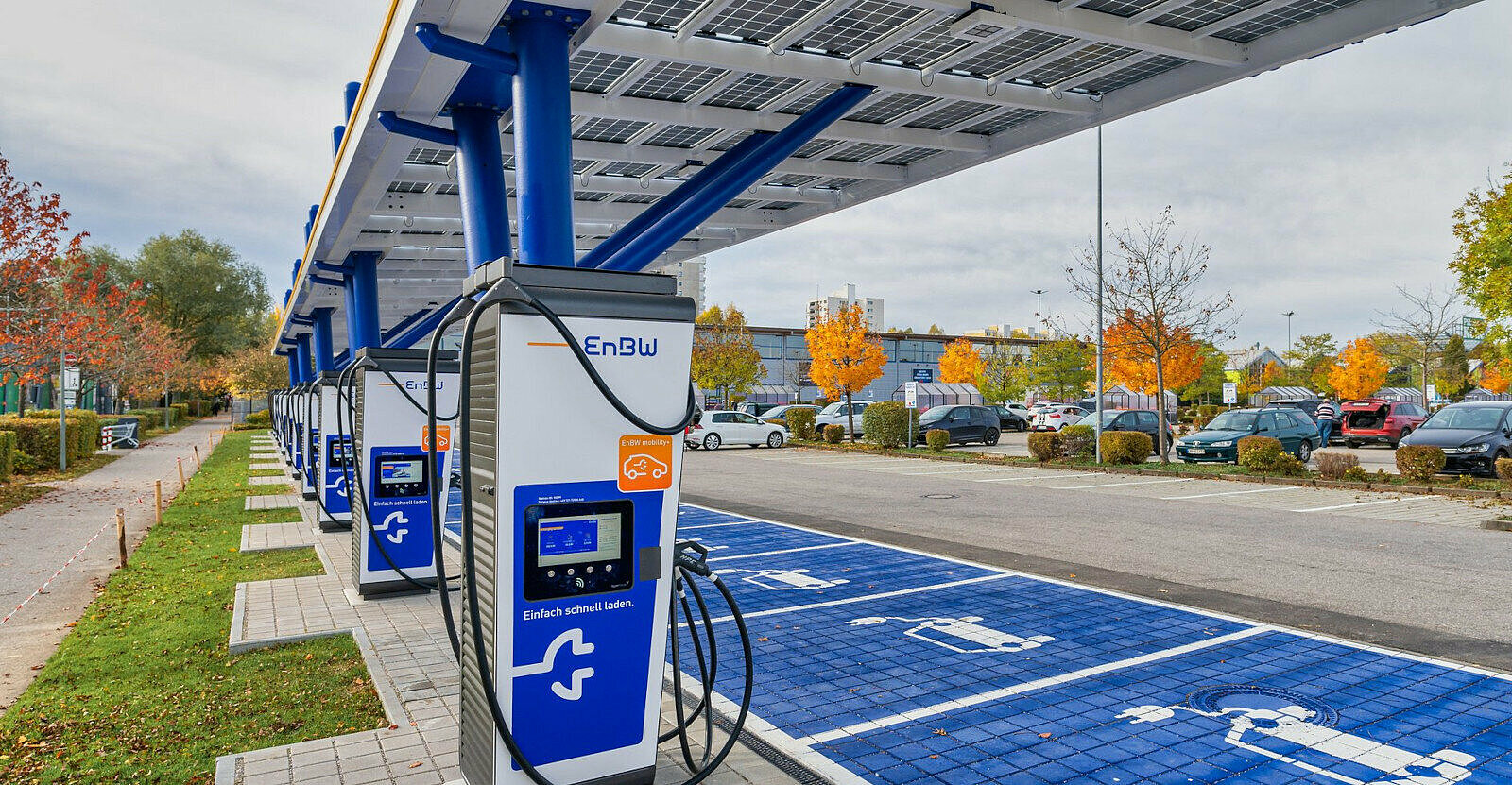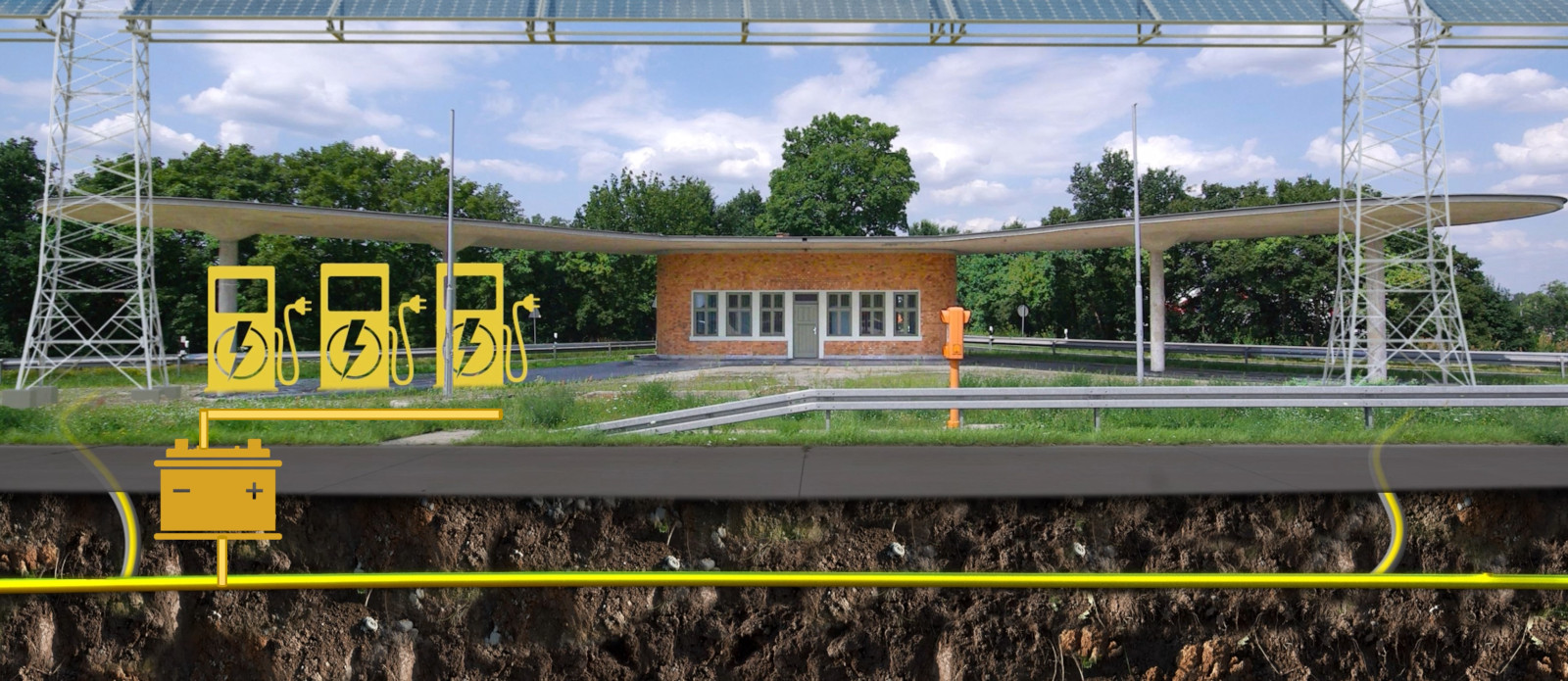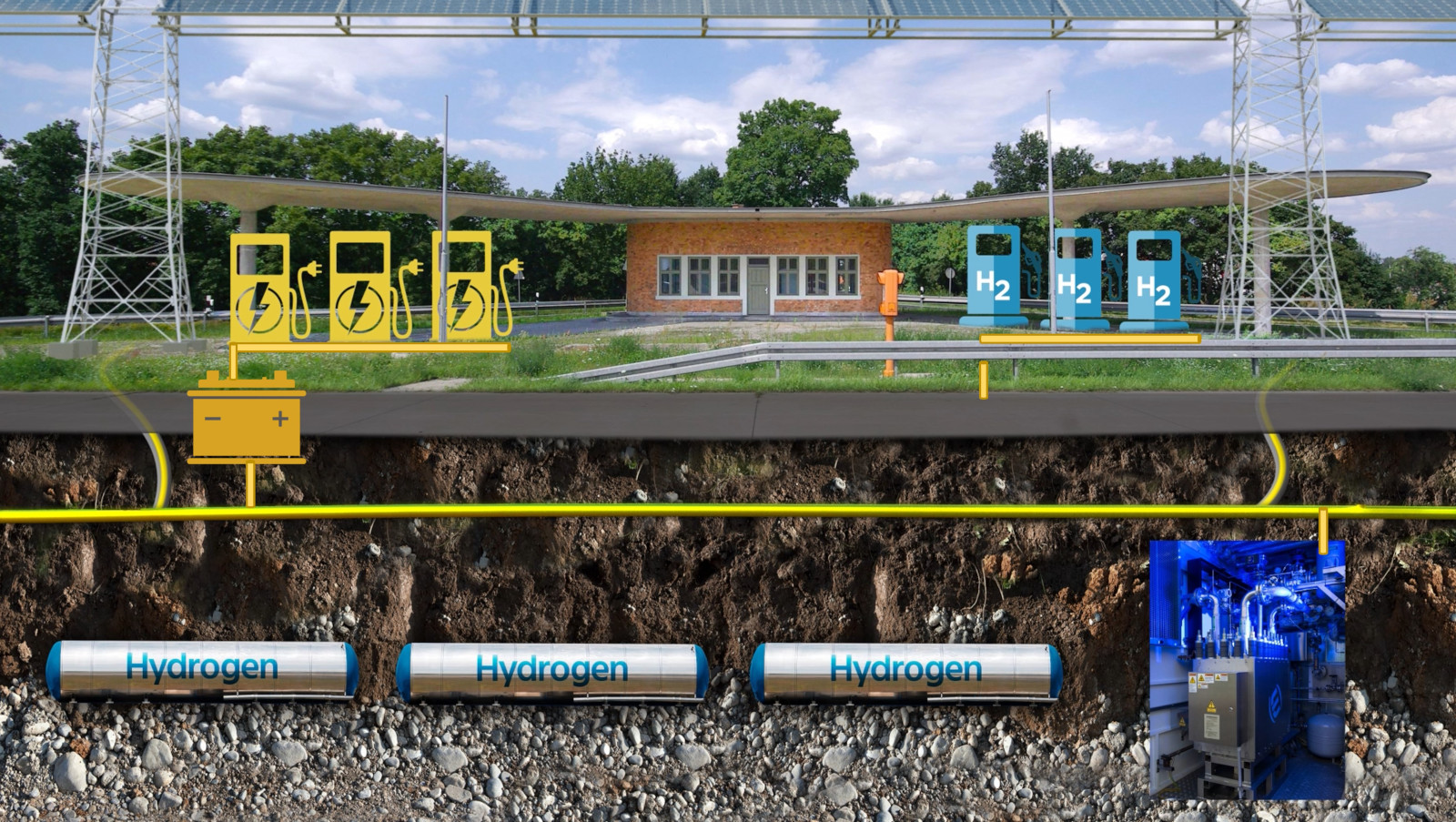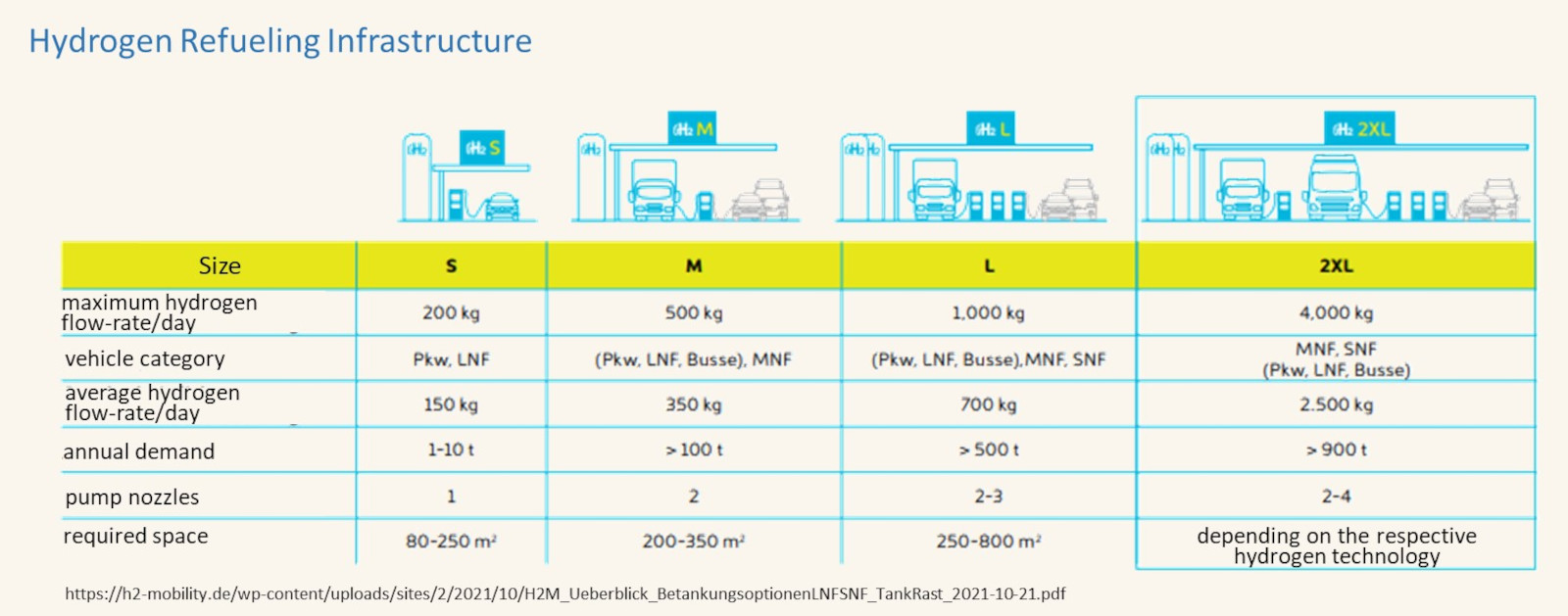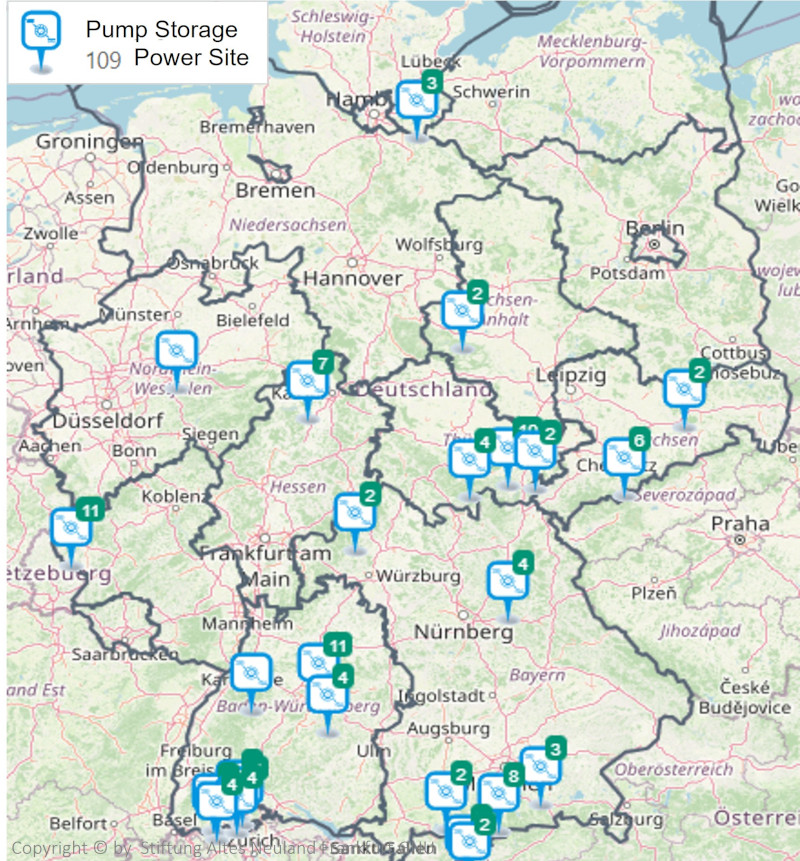Hydrogen and E-fueling Stations
In addition to fuels for low-CO2 internal combustion engines, the service stations of the future will also offer electricity and hydrogen. In Germany, there are currently more than 14,000 filling stations that have their fuel (today still gasoline or diesel) delivered regularly by tanker trucks.
For the hydrogen filling stations of the future, however, it will make more sense to obtain their energy locally or from the region as far as possible, since transporting hydrogen with cooling or with extremely pressure-resistant tanks is comparatively costly.
Theoretically, the electricity of the modern filling station can be obtained from the nearest major utility (often located kilometers away), but is much more sustainable produced on site.
The Energy Bands run along the federal highways where most of the refueling stations are located and can thus easily supply them with electricity: for direct delivery to e-cars or for decentralized hydrogen production.
